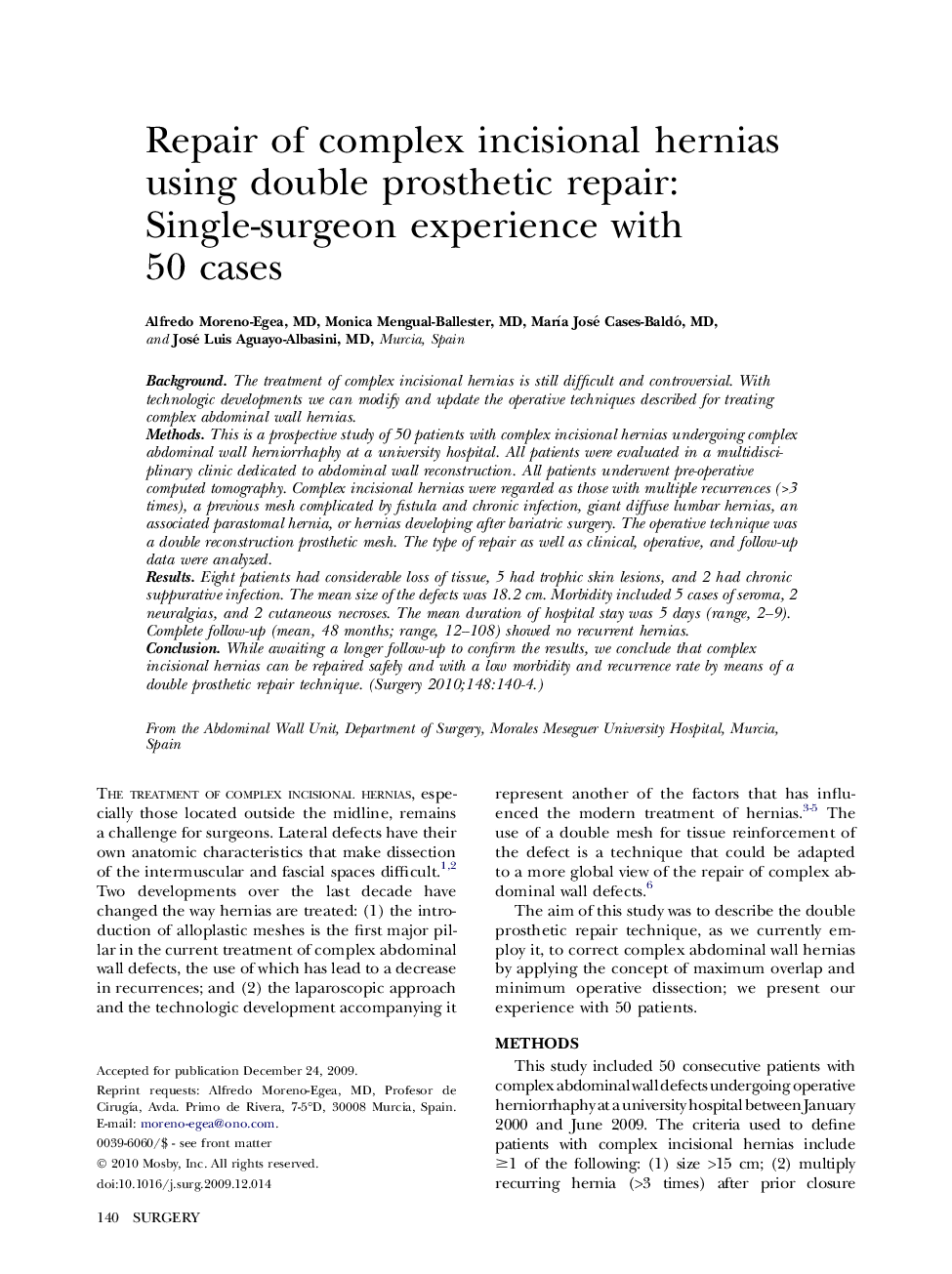| Article ID | Journal | Published Year | Pages | File Type |
|---|---|---|---|---|
| 4308680 | Surgery | 2010 | 5 Pages |
BackgroundThe treatment of complex incisional hernias is still difficult and controversial. With technologic developments we can modify and update the operative techniques described for treating complex abdominal wall hernias.MethodsThis is a prospective study of 50 patients with complex incisional hernias undergoing complex abdominal wall herniorrhaphy at a university hospital. All patients were evaluated in a multidisciplinary clinic dedicated to abdominal wall reconstruction. All patients underwent pre-operative computed tomography. Complex incisional hernias were regarded as those with multiple recurrences (>3 times), a previous mesh complicated by fistula and chronic infection, giant diffuse lumbar hernias, an associated parastomal hernia, or hernias developing after bariatric surgery. The operative technique was a double reconstruction prosthetic mesh. The type of repair as well as clinical, operative, and follow-up data were analyzed.ResultsEight patients had considerable loss of tissue, 5 had trophic skin lesions, and 2 had chronic suppurative infection. The mean size of the defects was 18.2 cm. Morbidity included 5 cases of seroma, 2 neuralgias, and 2 cutaneous necroses. The mean duration of hospital stay was 5 days (range, 2–9). Complete follow-up (mean, 48 months; range, 12–108) showed no recurrent hernias.ConclusionWhile awaiting a longer follow-up to confirm the results, we conclude that complex incisional hernias can be repaired safely and with a low morbidity and recurrence rate by means of a double prosthetic repair technique.
